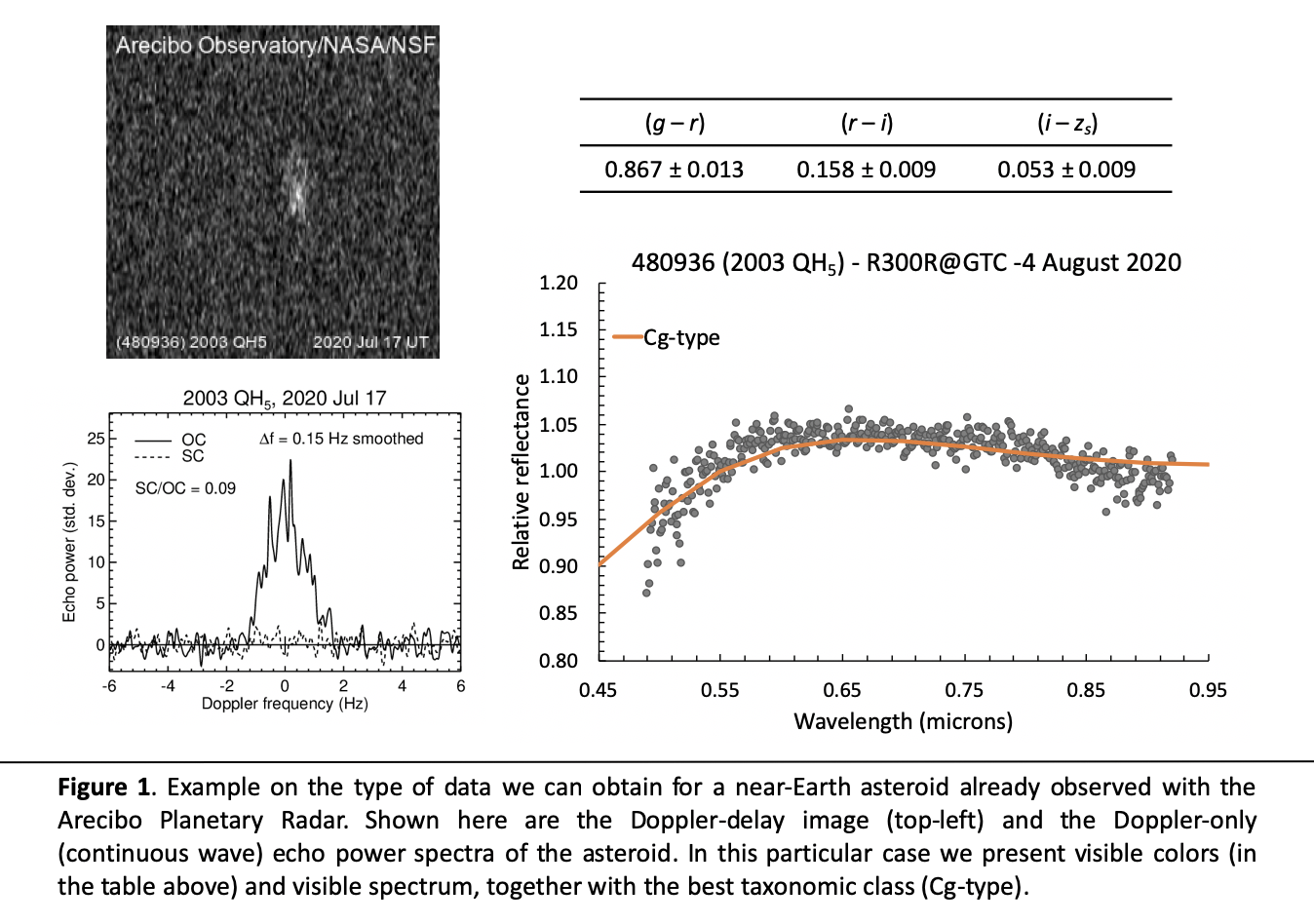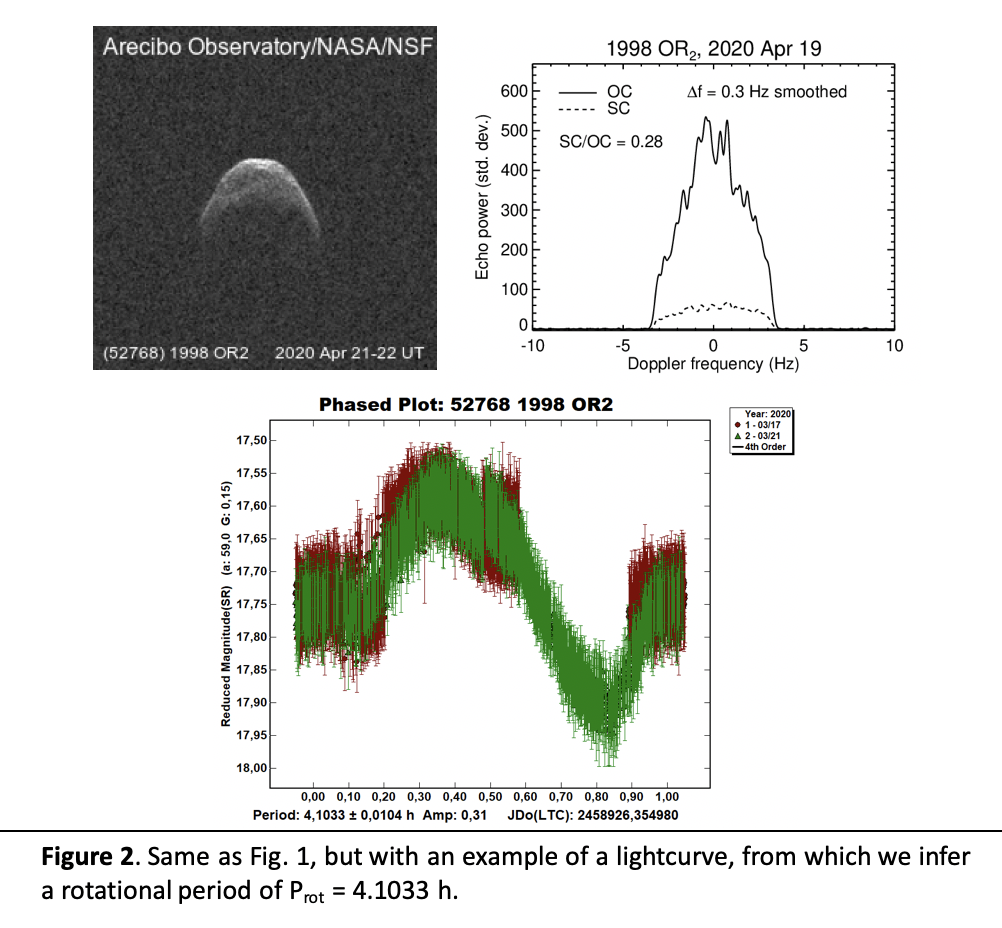NEOROCKS characterization programme of near-Earth asteroids previously observed with radar
- 1Instituto de Astrofisica de Canarias - IAC, Tenerife, Spain (jmlc@iac.es)
- 2Departamento de Astrofisica, Universidad de La Laguna - ULL, Tenerife, Spain
- 3Astronomical Institute of the Romanian Academy, Bucharest, Romania
- 4Florida Space Institute, University of Central Florida, Orlando, FL, USA
- 5GRANTECAN, La Palma, Spain
- 6Arecibo Observatory, University of Central Florida, Arecibo, PR, USA
- *A full list of authors appears at the end of the abstract
Introduction. The NEO Rapid Observation, Characterization and Key Simulations (NEOROCKS) project is funded (2020-2022) through the H2020 European Commission programme to improve our knowledge on near-Earth objects by connecting expertise in performing small body astronomical observations and the related modelling needed to derive their dynamical and physical properties. The Instituto de Astrofísica de Canarias (IAC), and in particular members of the Solar System Group, participate in the NEOROCKS project and currently lead one specific task: to collect observational data, mainly in the visible and near-infrared wavelength regions, of NEAs that have been observed in the past using the Arecibo Planetary Radar. In this work we present preliminary results, focusing on those targets having high signal-to-noise ratio radar data.
Observations. Our observations include spectroscopy, color photometry and lightcurves. They are performed using the facilities located at the Observatorios de Canarias (OOCC), that include the El Teide Observatory in the island of Tenerife and the El Roque de los Muchachos Observatory in the island of La Palma. Visible and near-infrared spectra are mainly obtained using the 10.4-m Gran Telescopio de Canarias (GTC) and its visible (OSIRIS) and near-infrared (EMIR) spectrographs. We also use the ALFOSC spectrograph at the 2.5-m Nordic Optical Telescope (NOT). Visible color photometry is obtained using the MuSCAT2 instrument at the 1.5-m Telescopio Carlos Sánchez (TCS). The setup allows to obtain simultaneous imaging in the g, r, i, and zsvisible bands. Time-series photometry in the visible is obtained using several telescopes, including the 46-cm TAR2, 80-cm IAC-80, and 1-m Jacobus Kapteyn Telescope (JKT).
Results. Spectra in the visible and/or the near-infrared wavelengths, as well as color photometry in the visible, are used to taxonomically classify the targets and to infer their composition (Fig 1). In the case of having no albedo measurements for one object, we can also use the taxonomy to have an estimation of the albedo based on the spectral class, and therefore determine the size of the asteroid. Lightcurves are used to both get the asteroid rotational period and, together with radar data, to obtain the shape and the spin axis orientation of the target (Fig. 2). In this way, a full characterization can be obtained for every asteroid observed within this program.


Acknowledgements. This project has received funding from the European Union’s Horizon 2020 research and innovation programme under grant agreement No 870403.
E. Dotto, M. Banaszkiewicz, S. Banchi, M.A. Barucci, F. Bernardi, M. Birlan, B. Carry, A. Cellino, M. Lazzarin, E. Mazzotta Epifani, A. Mediavilla, J. Nomen Torres, D. Perna, E. Perozzi, P. Pravec, N. Sanchez Ortiz, C. Snodgrass, C. Teodorescu, S. Anghel, N. Ariani, A. Bertolucci, F. Colas, A. Del Vigna, A. Dell’Oro, A. Di Cecco, L. Dimare, P. Fatka, S. Fornasier, E. Frattin, P. Frosini, M. Fulchignoni, R. Gabryszewski, M. Giardino, A. Giunta, J. Huntingford, S. Ieva, J.P. Kotlarz, F. La Forgia, G. Polenta, A. Rozek, P. Scheirich, A. Sergeyev, A. Sonka, G.B. Valsecchi, P. Wajer, A. Zinzi. [Arecibo Planetary Radar Team: M. Devogele, S. Marshall, A. McGilvray, F. Venditti, L. F. Zambrano-Marin]
How to cite: de León, J., Licandro, J., Popescu, M., Medeiros, H., Morate, D., Pinilla-Alonso, N., Perez-Toledo, F., and Planetary Radar Team*, A. and the NEOROCKS Team: NEOROCKS characterization programme of near-Earth asteroids previously observed with radar, Europlanet Science Congress 2021, online, 13–24 Sep 2021, EPSC2021-221, https://doi.org/10.5194/epsc2021-221, 2021.